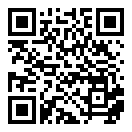Pages:
93-104
Receive Date: 2025/12/03
Accept Date: 2025/12/03
Abstract:
The purpose of this research is to compare the mental health and religious orientation of students who are users and non-users in social networks. The research method is "descriptive-comparative". The statistical population of this research included all the students of Tizhoshan high schools in Tabriz city in the academic year 2018-2019, among which 120 students scored 46-23 in the questionnaire "Addiction to mobile-based social networks" as non-users, and 120 students with scores higher than 46 in the said questionnaire were selected as user students after matching and using the "multi-stage and targeted cluster sampling" method. Data were collected by Goldberg and Hiller's (1979) "Mental Health" questionnaire and Hanif Khan et al.'s (2005) scale of "Muslim attitude towards religion". Data were analyzed using multivariate variance analysis in SPSS.23 software. The results of multivariate variance analysis showed that there is a significant difference between students who are users and non-users in social networks in terms of mental health and religious orientation. In addition, the results of Shafe's "follow-up" test also showed that social network users have significantly lower mental health and weaker religious orientation (p=0.005) than non-users of social networks. The findings of this research help to understand the basic differences between users and non-users of social networks in terms of mental health and religious orientation, and highlight the need to improve the mental health and religious orientation of students who use social networks.
چکیده و کلیدواژه فارسی (Persian)
Title :مقایسه سلامت روان و گرایش دینی دانشآموزان کاربر با غیر کاربر تیزهوش در شبکههای اجتماعی
Abstract:
هدف این پژوهش مقایسه سلامت روان و گرایش دینی دانش آموزان کاربر با غیرکاربر در شبکه های اجتماعی است. روش پژوهش «توصیفی ـ مقایسه ای» است. جامعه آماری این پژوهش دربرگیرنده تمام دانش آموزان دبیرستان های تیزهوشان شهر تبریز در سال تحصیلی 1399ـ1398 بود که از این میان تعداد 120 دانش آموز مطابق با نمرات 23ـ46 در پرسشنامه «اعتیاد به شبکه های اجتماعی مبتنی بر موبایل» به عنوان دانش آموزان غیرکاربر و 120 دانش آموز نیز با کسب نمرات بالاتر از 46 در پرسشنامه مذکور به عنوان دانش آموزان کاربر، پس از همسان سازی و با استفاده از روش «نمونه گیری خوشه ای چندمرحله ای و هدفمند» انتخاب شدند. اطلاعات به وسیله پرسشنامه «سلامت روان» گلدبرگ و هیلر (1979) و مقیاس «نگرش مسلمانان نسبت به دین» حنیف خان و همکاران (2005) گردآوری شد. داده ها با استفاده از تحلیل واریانس چندمتغیری در نرم افزار SPSS.23 تجزیه و تحلیل گردید. نتایج حاصل از تحلیل واریانس چندمتغیری نشان داد که بین دانش آموزان کاربر با غیرکاربر در شبکه های اجتماعی به لحاظ سلامت روان و گرایش دینی، تفاوت معناداری وجود دارد. علاوه بر آن، نتایج آزمون «تعقیبی» شفه نیز نشان داد که کاربران شبکه های اجتماعی به طور معناداری از سلامت روان پایین تر و گرایش دینی (005/0=p) ضعیف تری نسبت به غیرکاربران شبکه های اجتماعی برخوردارند. یافته های این پژوهش به شناخت تفاوت های اساسی بین کاربران و غیرکاربران شبکه های اجتماعی به لحاظ سلامت روان و گرایش دینی کمک می کند و ضرورت ارتقای سلامت روان و گرایش دینی دانش آموزان کاربر شبکه های اجتماعی را برجسته تر می نماید.
Cite this article:
RIS
Mendeley
BibTeX
APA
MLA
HARVARD
VANCOUVER
APA | MLA | HARVARD | VANCOUVER
Rathi, Mahdi, Hosseininasab, Seyed dawood, Panah Ali, Amir.(2025) A Comparative Study of Mental Health and Religious Orientation of Smart Users and Non-Users' Students in Social Networks. Ravanshenasi Wa Din, 16(2), 93-104
APA | MLA | HARVARD | VANCOUVER
Mahdi Rathi; Seyed dawood Hosseininasab; Amir Panah Ali."A Comparative Study of Mental Health and Religious Orientation of Smart Users and Non-Users' Students in Social Networks". Ravanshenasi Wa Din, 16, 2, 2025, 93-104
APA | MLA | HARVARD | VANCOUVER
Rathi, M, Hosseininasab, S, Panah Ali, A.(2025) 'A Comparative Study of Mental Health and Religious Orientation of Smart Users and Non-Users' Students in Social Networks', Ravanshenasi Wa Din, 16(2), pp. 93-104
APA | MLA | HARVARD | VANCOUVER
Rathi, M, Hosseininasab, S, Panah Ali, A. A Comparative Study of Mental Health and Religious Orientation of Smart Users and Non-Users' Students in Social Networks. Ravanshenasi Wa Din, 2025; 16(2): 93-104
 / Ph.D. Student of Educational Psychology, Tabriz Islamic Azad University / m.rasi.1399@gmail.com
/ Ph.D. Student of Educational Psychology, Tabriz Islamic Azad University / m.rasi.1399@gmail.com / Professor, Department of Psychology, Tabriz Islamic Azad University / d.hosseininasab@gmail.com
/ Professor, Department of Psychology, Tabriz Islamic Azad University / d.hosseininasab@gmail.com / Professor, Department of Psychology, Tabriz Islamic Azad University / a.panahali@gmail.com
/ Professor, Department of Psychology, Tabriz Islamic Azad University / a.panahali@gmail.com



